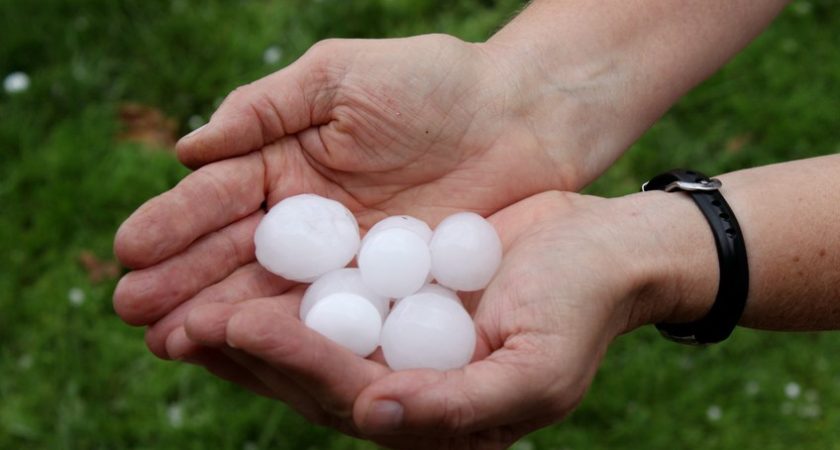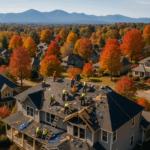Weather can be unpredictable, and turbulent weather—especially hail—can damage shingles. Contractors should explain to homeowners how hail can affect shingles and what they should watch out for.
Homeowners should also review their warranties to determine whether it provides any coverage for hail damage. Here are some answers to common questions regarding hail damage.
Is damage immediately noticeable? Not always. Hail impact may cause latent damage that can, over time, result in premature aging of the shingles. Without obvious visual damage, there is no real way to be sure how much, if any, damage shingles have encountered. Latent damage caused by hail or severe weather may not be apparent until months or years later and may cause the shingles to age prematurely.
How can I tell if the roof was damaged? Generally, damage can be seen as indentations and/or fractures on the shingle’s surface. Hailstones vary in size, shape, and hardness and can create a random pattern of dents or depressions. If this is not evident, look for indentations on metal flashings, siding, chimney caps, or even skylight flashings. After some time, clusters of granules may come off (at the point of impact) in a random pattern and expose the asphalt.
What are the most common types of damage?
- Granule loss at points of impact, which may be accompanied by surface depression. Loss of mineral granules as an immediate or gradual consequence of storm damage can lead to the asphalt coating being directly exposed to the elements. This may lead to accelerated aging of the shingle. Therefore, granule loss is NOT just cosmetic damage, and “sugaring†— the process of adding loose granules to damaged shingles with asphalt cement — is not a permanent solution.
- Cracks in the granule-asphalt surfacing, which may radiate outward from points of impact. Cracks may be present especially if high winds blew the shingles back.
- Exposed fiberglass mat, where hail shattered the granule-asphalt surfacing causing it to break away from the fiberglass mat.
- Fractured fiberglass mat, which may or may not be immediately visible. A fractured mat may result in tears radiating out from the points of impact. Furthermore, hidden damage to the mat may later develop into cracks and tears in time as the shingles age.
- Loosening of the self-seal strip. This damage may or may not be immediately visible and may weaken the seal integrity, creating the possibility of future shingle blow-off.
Can several individual shingles be replaced or should the entire roof be replaced?
While it is possible to replace individual storm-damaged shingles, latent damage to the surrounding shingles caused by a storm can be difficult to assess. Because of the potential for the surrounding shingles to also have experienced storm damage, complete roof replacement is sometimes recommended for the long-term performance of these roofs. If the damage is confined to one plane of the roof, replacement of just the damaged roof plane may be possible. If individual shingles are being replaced, any nails that were removed from surrounding shingles must be replaced and the surrounding shingles must be resealed by hand for the best results.
Courtesy of Liza Barth, GAF





